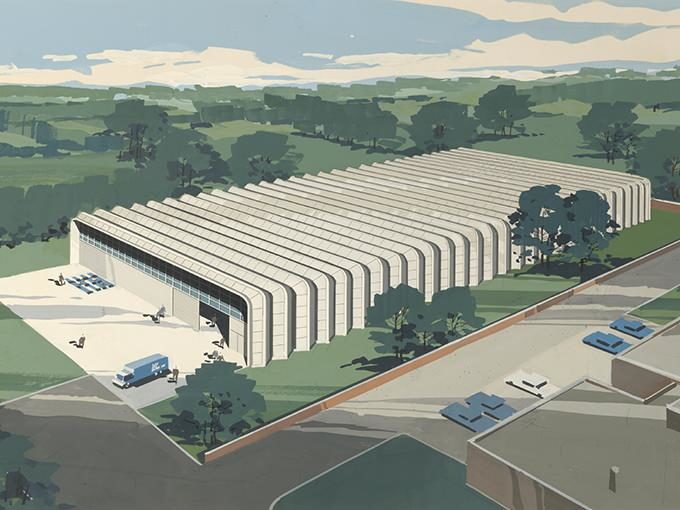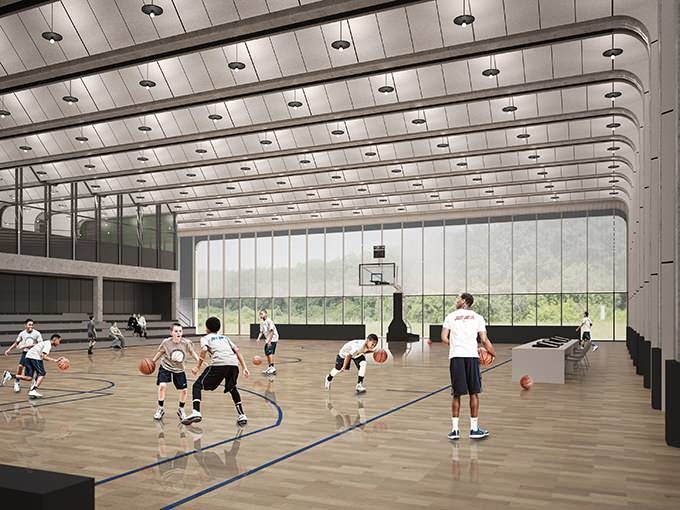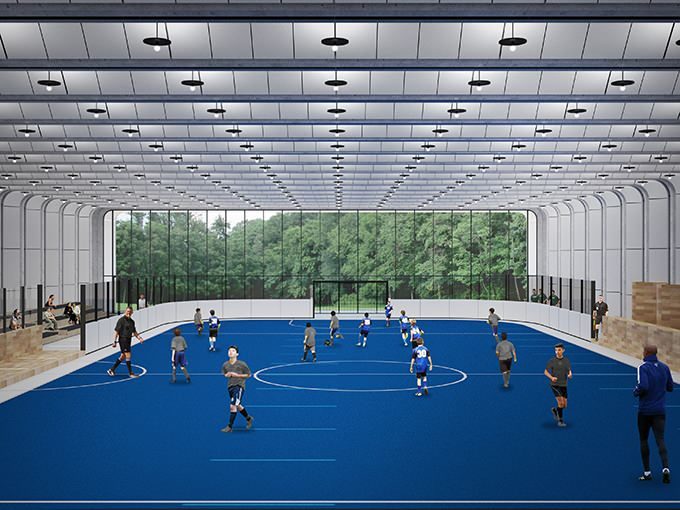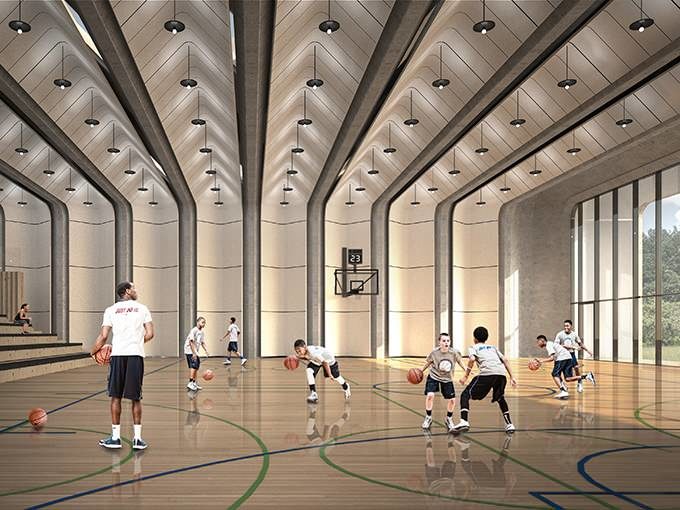



Landmarks Illinois, in partnership with Skidmore, Owings & Merrill LLP (SOM) and the City of Elgin, released a study that explores reuse opportunities for the Elgin Laundry Building, a distinctive accordion-shaped facility designed by Bertrand Goldberg located on the former Elgin Mental Health Hospital grounds. The study identifies how the currently unused Elgin Laundry Building could be reused as a multipurpose recreational facility for the people of Elgin while also preserving a striking example of the work of Chicago Modernist architect Bertrand Goldberg.
Completed in 1967, the Laundry Building, like other Goldberg buildings, is an enduring, innovative, and functional structure. The long-span, hangar-like structure—240 feet long by 110 feet wide—features open, column-free space and high ceilings, making it ideal for most sport and fitness activities.
Reuse Plans
The Laundry Building is structurally sound but cosmetically rough: Reuse scenarios proposed by SOM include modernizing the space without compromising Goldberg’s design. Programmed for maximum flexibility, the space can meet Elgin’s changing needs while serving as a hub for the community, integrating the former northern end of the hospital campus into the fabric of the city.
SOM reimagined the Laundry Building as an extension of Elgin’s existing central recreation complex. The study proposes a series of designs to accommodate different large-space activities including indoor soccer and basketball, as well as smaller, specialized areas for strength training, martial arts, wrestling, and dance. Options for the proposed reuse include seating for nearly 350 guests in fixed bleachers, with additional space beyond the building’s retractable curtain walls. Planned amenity spaces include locker rooms, administrative offices, and a public reception area. Refurbished glass custom walls at each end of the facility will invite visitors inside and allow for exterior observation of indoor activities.
Environmental Upgrades
The design team also proposed high performance design features, including photovoltaic panels, rainwater harvesting, daylighting, natural ventilation during spring and fall, and low-flow fixtures. These features could enable the Laundry Building to become a net-zero-energy building.
With the renovation of the Laundry Building, a vital public space will be opened to the Elgin community while preserving a key piece of the city’s architectural legacy. Working closely with local residents, stakeholders and end-users, the design—if pursued—will provide a welcoming, high-caliber, and sustainable athletic and community center for the City of Elgin.
About Skidmore, Owings & Merrill LLP
Skidmore, Owings & Merrill LLP (SOM) is one of the leading architecture, interior design, engineering, and urban planning firms in the world, with an 80-year reputation for design excellence and a portfolio that includes some of the most important architectural accomplishments of the 20th and 21st centuries. Since its inception, SOM has been a leader in the research and development of specialized technologies, new processes and innovative ideas, many of which have had a palpable and lasting impact on the design profession and the physical environment. The firm’s longstanding leadership in design and building technology has been honored with nearly 2,000 awards for quality, innovation, and management. The American Institute of Architects has recognized SOM twice with its highest honor, the Architecture Firm Award—in 1962 and again in 1996. The firm maintains offices in New York, Chicago, San Francisco, Los Angeles, Washington, D.C., London, Hong Kong, Shanghai, Mumbai, and Abu Dhabi.
About Landmarks Illinois
Landmarks Illinois is a membership-based nonprofit organization serving the people of Illinois. We inspire and empower stakeholders to save places that matter to them by providing free guidance, practical and financial resources and access to strategic partnerships.